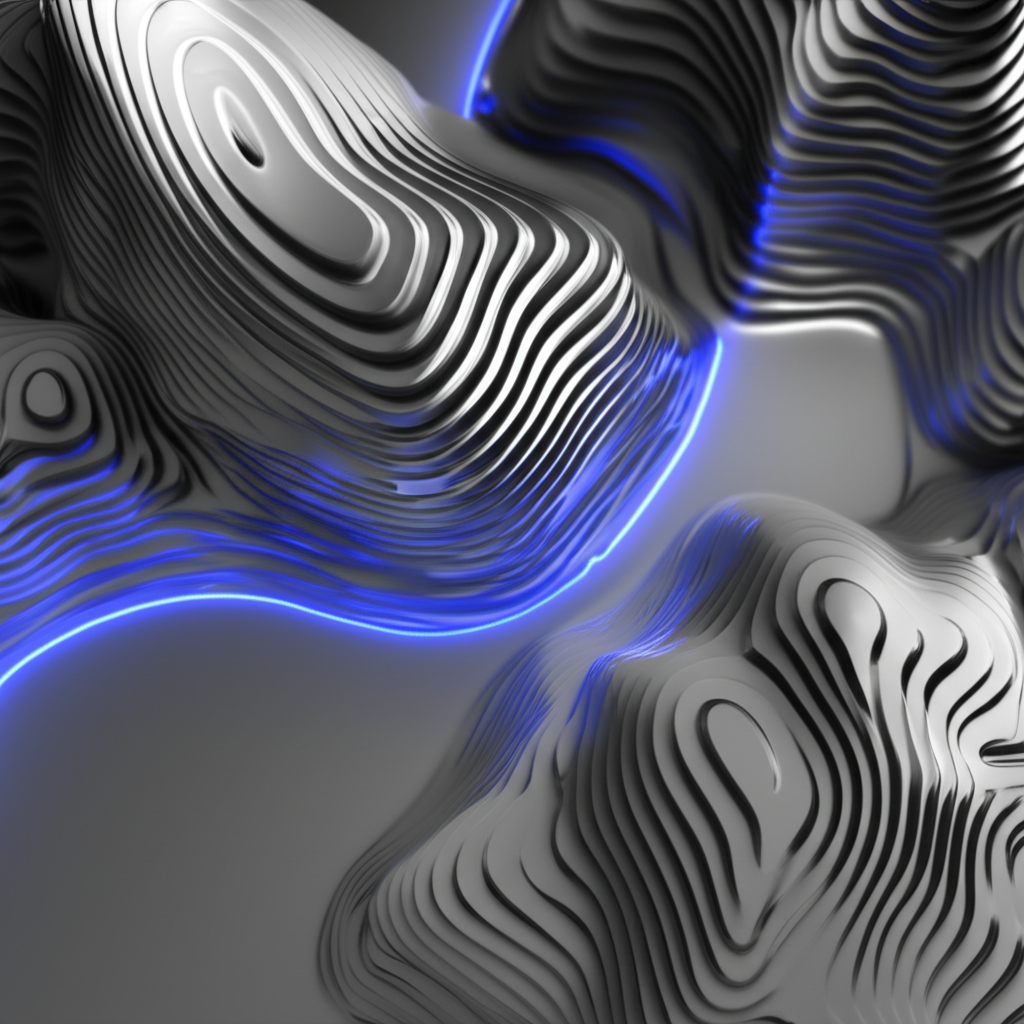Understanding CNC Machining Surface Roughness Standards

TL;DR
CNC machining surface roughness standards define the acceptable texture of a machined part's surface. The default commercial standard is 3.2 µm Ra, which features visible tool marks but is suitable for most general applications. For components requiring higher precision, tighter tolerances, or specific functional properties like wear resistance, finer standards such as 1.6 µm, 0.8 µm, and 0.4 µm Ra are specified.
What Is Surface Roughness in CNC Machining?
Surface roughness is a measure of the fine-scale texture on a part's surface, consisting of microscopic peaks and valleys created during the CNC machining process. Even a surface that appears perfectly smooth to the naked eye has these irregularities. This texture is not just a cosmetic feature; it critically affects a part's functionality, influencing friction, wear resistance, lubrication retention, and its ability to form a seal. Understanding these characteristics is essential for engineers and designers to ensure a component performs as intended.
Several key parameters are used to quantify surface roughness, as defined by international standards like ISO 21920-2:2021. The most common metrics include:
- Ra (Roughness Average): This is the most widely used parameter globally. It represents the arithmetic average of the absolute deviations of the surface profile from a central mean line. Ra provides a general, stable indication of surface texture and is excellent for overall quality control.
- Rz (Average Maximum Height): Rz calculates the average of the five largest peak-to-valley differences across five separate sampling lengths. Because it focuses on the extreme variations, Rz is more sensitive to scratches or burrs than Ra and is often specified for critical applications like sealing surfaces where such defects could cause failure.
- RMS (Root Mean Square Roughness): Less common than Ra but important in precision engineering, RMS is the root mean square average of the profile height deviations from the mean line. It gives more weight to larger deviations, making it a more sensitive indicator of significant peaks and valleys that could impact performance in optical or high-precision applications.
While Ra is the default standard for most drawings, understanding the differences between these parameters is crucial. For example, two surfaces could have the same Ra value but vastly different Rz values if one has a few significant scratches while the other has a uniform texture. Therefore, specifying the correct parameter is vital for functional success.
A Guide to Surface Roughness Grades and Ra Values
In CNC machining, surface roughness is categorized into distinct grades, each defined by a specific Ra value and suited for different applications and budgets. Choosing the correct grade is a balance between functional requirements and manufacturing cost, as achieving a smoother finish requires more time, control, and often additional processes. As detailed by manufacturing experts like Komacut, finer finishes directly increase production costs.
3.2 µm Ra: The Standard Commercial Finish
This is the default, as-machined finish for most CNC parts. It is characterized by visible but smooth-to-the-touch tool marks. As the most economical option, it is ideal for structural components, brackets, and general-purpose parts where aesthetics are not a primary concern. It is also the recommended maximum roughness for parts subjected to stress or vibration.
1.6 µm Ra: For Tighter Fits and Low-Stress Motion
Achieved with finer feeds and higher speeds under controlled conditions, a 1.6 µm Ra finish has only faintly visible tool marks. It is specified for parts requiring tight fits or for slow-moving components under light loads. This finish is a good middle ground, offering improved performance without a significant cost increase (approximately 2.5% higher than the standard).
0.8 µm Ra: High-Grade Finish for Precision Components
Considered a high-grade finish, 0.8 µm Ra is necessary for parts exposed to high stress, concentrated loads, or occasional motion where low friction is important. According to RapidDirect, engineers commonly specify this for precision components like bearings, shafts, and hydraulic valve components. Achieving this requires very close control and adds around 5% to the production cost.
0.4 µm Ra: The Finest Finish for Critical Applications
This is the smoothest and highest-quality finish commonly offered. It has no visible tool marks and often requires secondary processes like grinding or polishing. It is reserved for critical components operating under high stress, high speeds, or requiring a perfect seal, such as pneumatic cylinder rods, high-performance bearings, and optical parts. This level of refinement comes at a significant cost, increasing the price by 11-15% or more.
| Ra Value | Characteristics | Common Applications | Relative Cost Impact |
|---|---|---|---|
| 3.2 µm | Visible tool marks, standard as-machined finish. | Structural parts, brackets, general fixtures. | Baseline (Standard) |
| 1.6 µm | Faintly visible tool marks, controlled machining. | Tight fits, slow-moving parts, electronic housings. | ~ +2.5% |
| 0.8 µm | No visible tool marks, high-grade finish. | Bearings, precision gears, parts under stress concentration. | ~ +5% |
| 0.4 µm | Very smooth, often requires polishing. | High-speed bearings, optical components, critical seals. | ~ +11-15% |
How to Interpret Surface Finish Symbols and Charts
To communicate surface roughness requirements effectively, engineers use standardized symbols on technical drawings. The most common symbol is a check-mark-like figure, which provides a wealth of information about the desired surface texture. The basic symbol indicates that a surface should be machined, while variations specify details like the required Ra value, the manufacturing process, the sampling length, and the direction of the lay (the dominant pattern of surface texture).
Understanding these symbols is crucial for ensuring parts are manufactured to specification. For instance, a number placed above the check mark indicates the required Ra value in micrometers. A circle within the symbol signifies that material removal is prohibited, meaning the finish must be achieved by processes like casting or forging without subsequent machining. A horizontal line added to the top of the symbol indicates that material removal is mandatory. Information about other parameters like Rz or the required process (e.g., 'grind') can be noted above this line.
In addition to symbols, surface roughness charts are invaluable tools. These charts, like the ones provided by Get It Made, visually compare the Ra values achievable with different manufacturing processes—from sand casting and forging (rougher) to milling, turning, grinding, and polishing (smoother). This allows a designer to quickly see if their desired surface finish is feasible and cost-effective with a particular manufacturing method. For example, a chart might show that standard CNC milling can reliably achieve 3.2 µm to 1.6 µm Ra, but reaching 0.4 µm Ra will almost certainly require a secondary grinding or lapping operation.

Choosing the Right Surface Finish: Key Factors to Consider
Selecting the appropriate surface finish is a critical design decision that directly impacts performance, longevity, and cost. It's about finding the optimal balance for your specific application rather than simply choosing the smoothest possible option. Over-specifying a finish can needlessly inflate costs, while under-specifying can lead to premature part failure. Consider the following factors when making your choice:
- Function and Mating Parts: The primary consideration is the part's function. Will it be a static component or part of a dynamic assembly? For moving parts, especially those in contact with others like bearings or seals, a smoother finish (e.g., 0.8 µm Ra or lower) is essential to reduce friction, minimize wear, and prevent leakage. Conversely, for some applications, a rougher surface might be desired to improve paint adhesion or lubricant retention.
- Aesthetics and Visual Appearance: For consumer-facing products or components where visual quality is important, a finer surface finish is often required. A smooth, polished surface conveys quality and precision. Surfaces with Ra values of 1.6 µm or lower are often used for cosmetic parts, like electronic housings, to eliminate visible tool marks and create an appealing look.
- Material Properties: The material being machined plays a significant role in the achievable surface finish. Softer metals like aluminum can generally achieve a smoother finish more easily than harder steels. The material's machinability will influence the tool choice, cutting speeds, and feeds required to hit a target Ra value.
- Cost and Production Time: There is a direct correlation between surface smoothness and cost. Each step down in Ra value—from 3.2 µm to 1.6 µm, and further to 0.8 µm and 0.4 µm—requires more controlled machining, slower feed rates, and often additional finishing steps like grinding or polishing. This increases both machine time and labor, driving up the final part cost. Always ask if the functional or aesthetic benefits of a smoother finish justify the added expense.
For projects with tight tolerances and demanding applications, partnering with a specialized service is crucial. For instance, providers like XTJ CNC Machining can deliver rapid prototyping and production parts, achieving tolerances down to +/- 0.005mm across a wide range of materials, ensuring your components meet the most stringent specifications.





